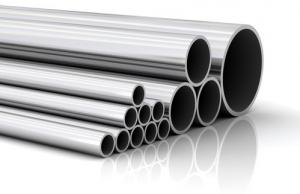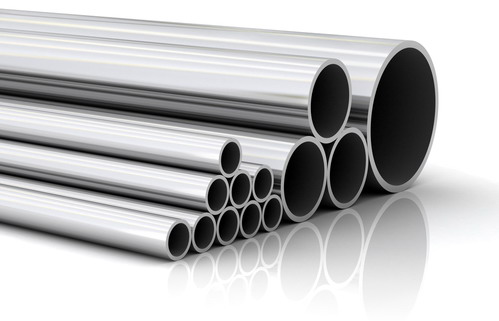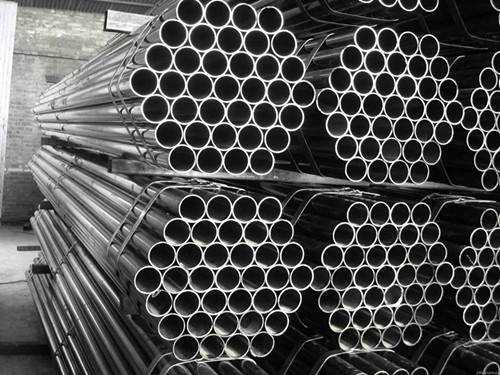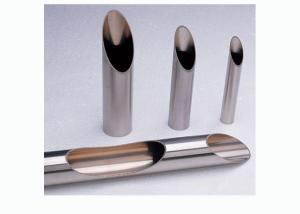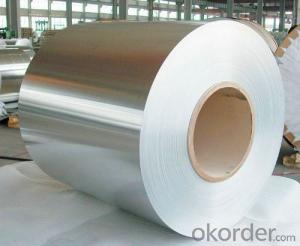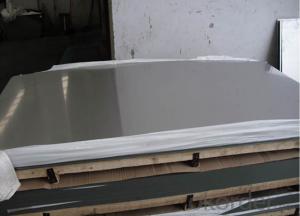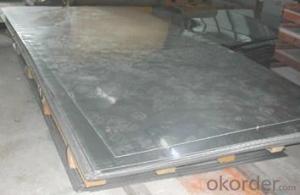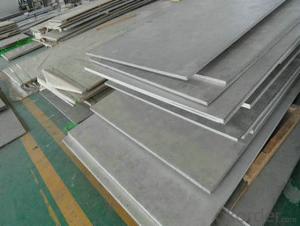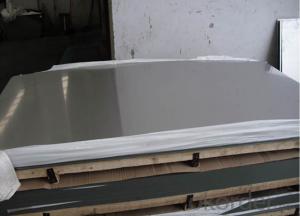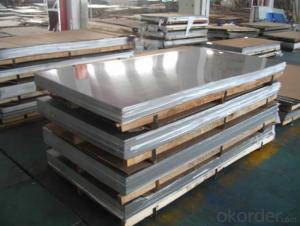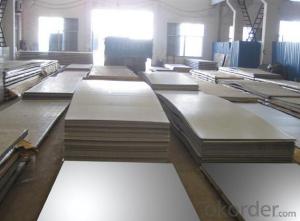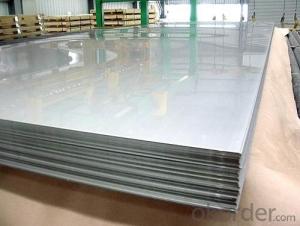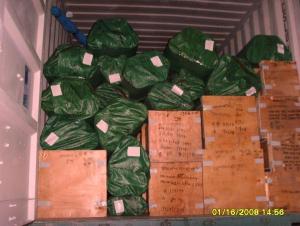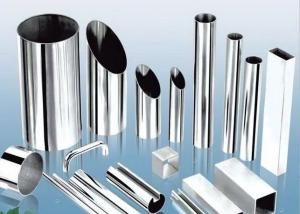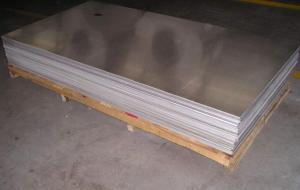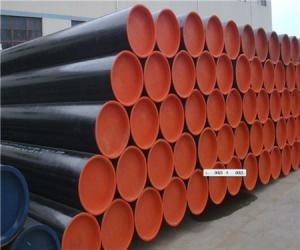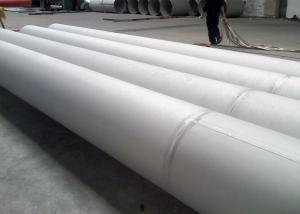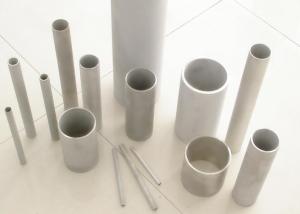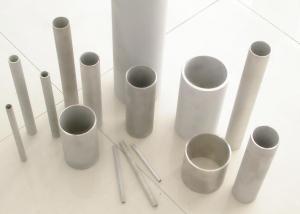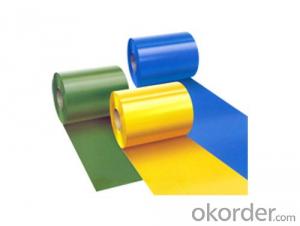Stainless Steel Seamless Pipes
- Loading Port:
- Shanghai
- Payment Terms:
- TT OR LC
- Min Order Qty:
- -
- Supply Capability:
- 100000 m.t./month
OKorder Service Pledge
Quality Product, Order Online Tracking, Timely Delivery
OKorder Financial Service
Credit Rating, Credit Services, Credit Purchasing
You Might Also Like

Stainless steel seamless pipe
Standard: | ASTM/ASME/DIN/EN/JISG/GB |
Dimension: | 3" - 16" x SCH10/40/80/120/160 |
Grade: | 304, 304L,304/304L, 316, 316L, 316/316L,316Ti,321, 321H, 310S, 347H,317L |
Ends: | in plain end or bevelled ends or as customer's reqestments. |
Tolerance | Thickness +20% / -12.5%. Length:+10/-0mm |
Price term: | FOB,CIF,CNF,CFR etc |
Delivery time: | 45~60 days ,according to customer's quantity |
Payment: | 100% irrevocable L/C at sight, or T/T 30% deposit,or CAD |
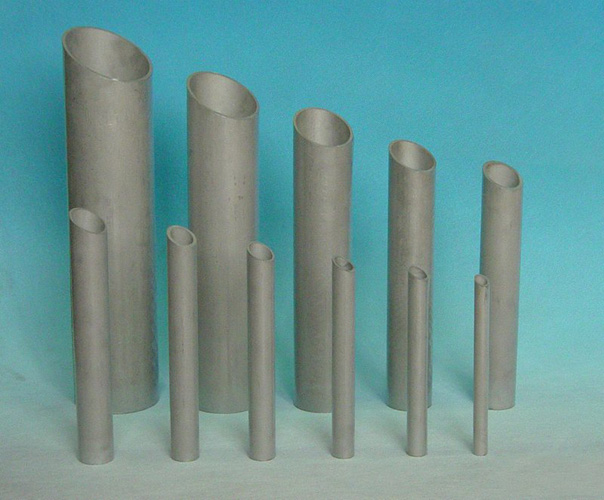
- Q: Can stainless steel sheets be bent or formed into different shapes?
- Indeed, it is possible to bend or shape stainless steel sheets into various forms. This incredibly versatile material, stainless steel, can undergo a multitude of processes, including bending, rolling, and forming, enabling the creation of an extensive array of shapes and structures. The capacity to bend stainless steel sheets renders it highly suitable for implementation in industries such as architecture, automotive, and manufacturing. Furthermore, the exceptional corrosion resistance properties of stainless steel remain intact even after the bending procedure, further solidifying its status as a resilient and enduring material option for diverse applications.
- Q: Can stainless steel sheets be used for brewery piping?
- Yes, stainless steel sheets can be used for brewery piping. Stainless steel is a common material choice for brewery piping due to its corrosion resistance, durability, and hygienic properties. It can withstand the harsh conditions and high temperatures associated with the brewing process, making it an ideal material for brewery piping systems.
- Q: 430 stainless steel plate maximum temperature tolerance is how many degrees?
- 430 stainless steel plate, maximum heat resistance is 900 degrees celsius.
- Q: Are stainless steel sheets resistant to pitting and crevice corrosion?
- Yes, stainless steel sheets are highly resistant to pitting and crevice corrosion due to their chromium content, which forms a protective passive layer on the surface, preventing corrosion from occurring.
- Q: Are stainless steel sheets suitable for marine environments?
- Yes, stainless steel sheets are suitable for marine environments. Stainless steel is highly resistant to corrosion and rust due to the presence of chromium in its composition. This makes it an ideal material for use in marine environments where constant exposure to saltwater and moisture can cause other metals to corrode quickly. Stainless steel sheets also have good mechanical properties, high strength, and excellent durability, which further make them suitable for marine applications. Additionally, stainless steel is easy to clean and maintain, ensuring its longevity and performance in harsh marine conditions.
- Q: What are the common sizes and thicknesses of stainless steel sheets?
- The common sizes and thicknesses of stainless steel sheets vary depending on the intended use and industry standards. However, there are some standard sizes and thicknesses that are commonly found in the market. For stainless steel sheets, the most common sizes range from 4x8 feet (1219x2438mm) to 5x10 feet (1524x3048mm). These sizes are widely available and are suitable for various applications such as construction, automotive, and fabrication. Regarding thickness, stainless steel sheets are available in a range of gauges, usually measured in inches or millimeters. The most common thicknesses for stainless steel sheets are 0.0276 inches (0.7mm), 0.0359 inches (0.91mm), 0.0478 inches (1.21mm), 0.0598 inches (1.52mm), 0.0747 inches (1.90mm), and 0.0897 inches (2.28mm). These thicknesses are frequently used in commercial and industrial applications. It is important to note that stainless steel sheets can be custom-made to meet specific requirements, including non-standard sizes and thicknesses. In such cases, it is advisable to consult with a supplier or manufacturer who can provide personalized solutions based on the specific needs of the project.
- Q: Are stainless steel sheets resistant to saltwater corrosion?
- Stainless steel sheets possess a high level of resistance against corrosion caused by saltwater. The exceptional corrosion resistance of stainless steel is widely recognized, rendering it an ideal material for use in environments exposed to saltwater. The presence of chromium in stainless steel results in the formation of a protective oxide layer on the surface, effectively acting as a barrier against corrosion. This oxide layer serves to shield the steel from direct contact with saltwater, thus minimizing the risk of corrosion. Moreover, stainless steel grades such as 316 and 316L are specifically engineered to provide enhanced resistance against saltwater corrosion, further increasing their suitability for marine applications. In conclusion, the outstanding corrosion resistance properties of stainless steel sheets make them a dependable option for saltwater environments.
- Q: Can stainless steel sheets be used for elevator cladding?
- Indeed, elevator cladding can make use of stainless steel sheets. Stainless steel proves to be a favored material for this purpose as it possesses qualities of endurance, resistance to corrosion, and an aesthetically pleasing appearance. Architects and designers often favor stainless steel for elevators due to its ability to provide a sleek and contemporary look. Various finishes, including brushed, mirrored, or patterned, are available for stainless steel sheets, offering customization and design flexibility. Moreover, stainless steel is easily cleaned and maintained, making it a practical choice for high-traffic areas like elevators. In summary, stainless steel sheets present a durable and visually appealing solution for elevator cladding.
- Q: Are stainless steel sheets resistant to chemicals?
- Yes, stainless steel sheets are generally resistant to chemicals. Stainless steel is known for its high corrosion resistance, which makes it suitable for various applications in industries such as chemical processing, pharmaceuticals, and food processing. The alloying elements present in stainless steel, such as chromium and nickel, create a protective layer on the surface of the material, preventing the penetration of most chemicals. However, it is important to note that the resistance to chemicals may vary depending on the specific grade and composition of stainless steel being used. In highly aggressive environments or when dealing with specific chemicals, it is advisable to consult with a materials engineer or refer to compatibility charts to ensure the optimal choice of stainless steel grade.
- Q: Can stainless steel sheets be used in the automotive industry?
- Yes, stainless steel sheets can be used in the automotive industry. Stainless steel is often used in the construction of automotive parts due to its exceptional strength, durability, and resistance to corrosion. It is commonly used in the production of components such as exhaust systems, fuel tanks, bumpers, and trim. Stainless steel sheets offer a high degree of flexibility in terms of design possibilities, allowing manufacturers to create complex shapes and structures. Additionally, stainless steel's aesthetic appeal and ease of maintenance make it a popular choice in the automotive industry.
Send your message to us
Stainless Steel Seamless Pipes
- Loading Port:
- Shanghai
- Payment Terms:
- TT OR LC
- Min Order Qty:
- -
- Supply Capability:
- 100000 m.t./month
OKorder Service Pledge
Quality Product, Order Online Tracking, Timely Delivery
OKorder Financial Service
Credit Rating, Credit Services, Credit Purchasing
Similar products
Hot products
Hot Searches
Related keywords
